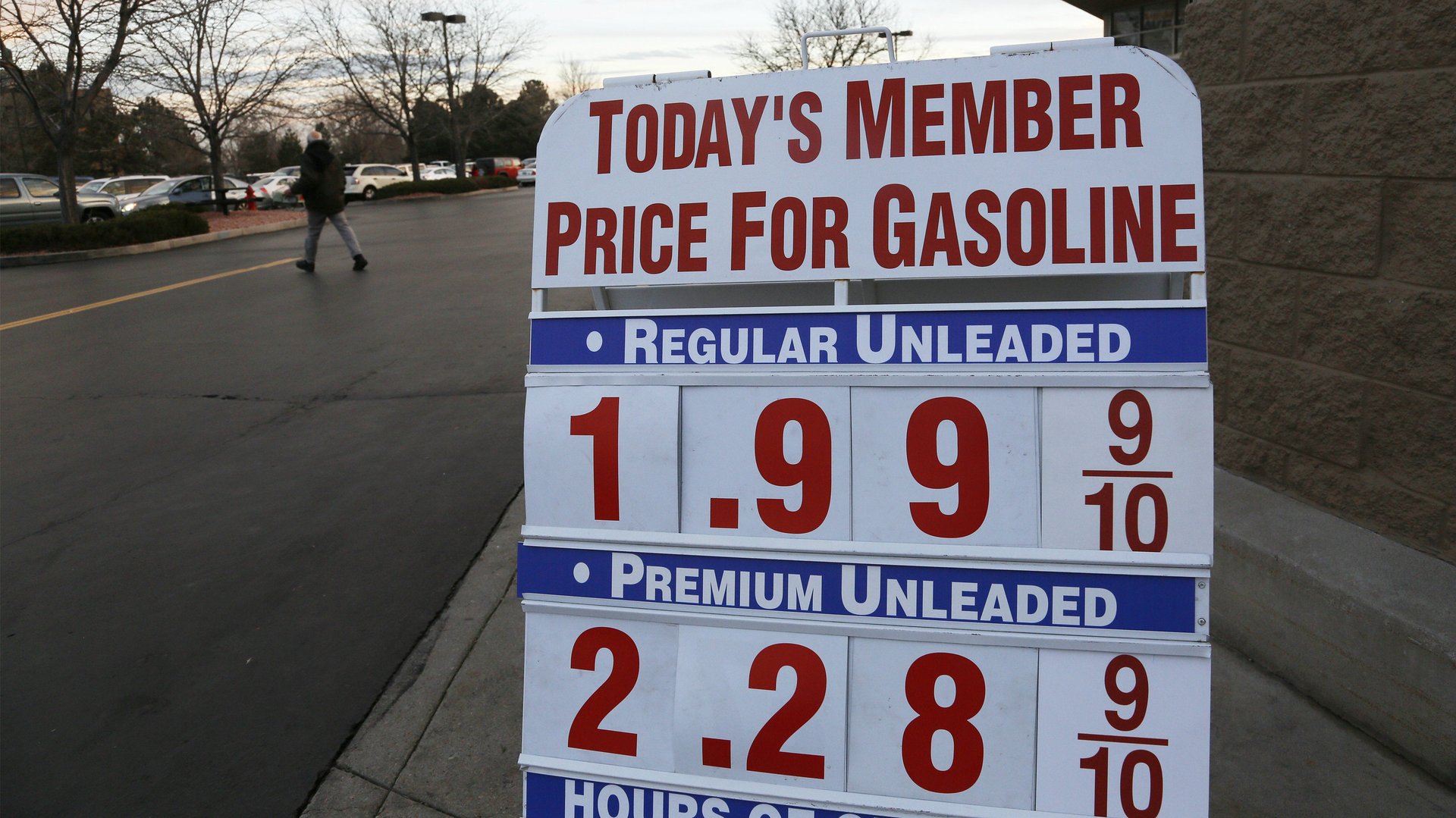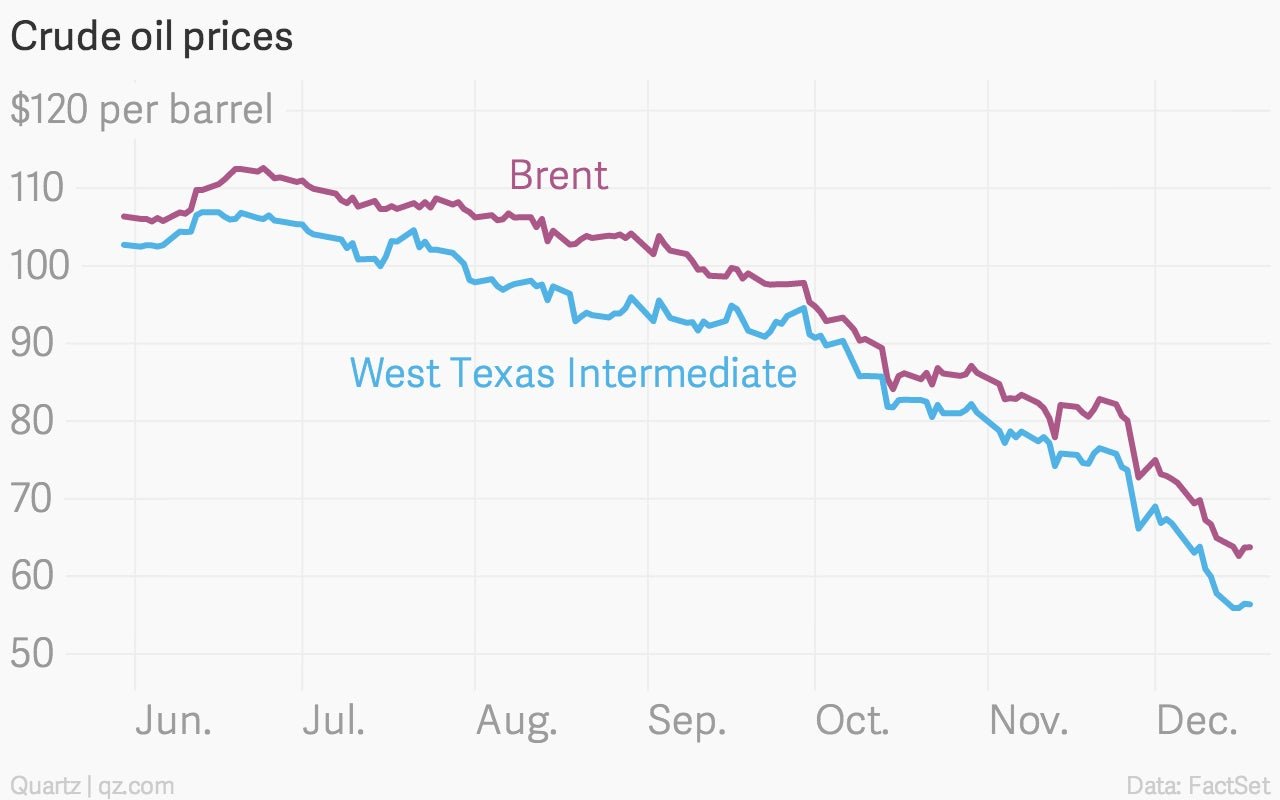Why $60 a barrel oil is the new $75
Is oil’s long and deep plunge over, now that prices have bounced back a bit? Probably not—the trend line suggests that the bloodletting has only paused. But even if the decline has already run its course, many US shale drillers will be ok if oil stays around $60 a barrel or less—even if their cost structures seem right now to imply a higher break-even point.


Is oil’s long and deep plunge over, now that prices have bounced back a bit? Probably not—the trend line suggests that the bloodletting has only paused. But even if the decline has already run its course, many US shale drillers will be ok if oil stays around $60 a barrel or less—even if their cost structures seem right now to imply a higher break-even point.
One big reason is that outlays on capital costs like drilling are starting to stretch a bit further. As major producers cut back on drilling, that leads to lower fees for rigs, rig workers, and other services. That means drillers “can spend less to get the same or potentially even more in terms of production,” Goldman Sachs said in a note to clients. The declining cost trend has only begun, but already rig rates are down 15% to 20%, according to Goldman.

Drillers are starting to figure out how to work smarter in a way that can easily save $15 a barrel in costs, according to Wood Mackenzie, an Edinburgh-based oil research firm. That’s why $60 a barrel oil today may feel like $75 yesterday to energy producers.
R.T. Dukes, a WoodMac analyst, told Quartz that oil producers are attempting to cut expenses by 30%—but let’s say they settle for 20% on average. That would slash the break-even oil price required to earn a 10% rate of return by $7-$12 per barrel. “Lower oil prices will lead to lower costs, which in turn improves well-level economics in the US,” Dukes said.
Not everyone is so sunny about the prospect of cutting costs. In a note to clients, energy investment bank Tudor Pickering cast doubt on the thesis, saying that drilling costs are already relatively low–while cuts ranging from 15% to 20% are possible, the bank said, they are not sustainable, because then service companies won’t be making enough money to stay in business.
Yet it’s undeniable that costs are dropping—and they may keep falling for a while, for both shale and offshore drilling, in the US and around the world. In a client note Morgan Stanley foresees a drop in day rates for drilling rigs, with the steepest declines not coming until 2016.